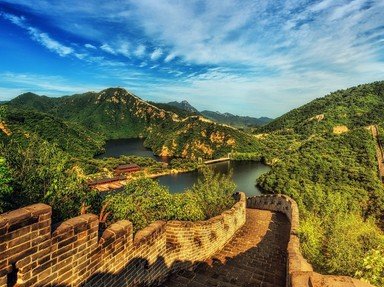Quiz Answer Key and Fun Facts
1. Who was the first Chinese Emperor?
2. Was Confucius (551-479 B.C) an emperor?
3. What was the jian?
4. Why were ancient Chinese mummies covered with jade stone?
5. What was the significance of the ancient Chinese custom of bowing?
6. What kind of wine was often used in the ceremonies and rituals of ancient China?
7. What was the dragon-backbone machine?
8. What were known as the three 'perfections' in ancient China?
9. Why is the Qianxun Pagoda unique?
10. What was the Zhuqingting (also known by its Japanese name of Taketonbo)?
Source: Author
doomed
This quiz was reviewed by FunTrivia editor
bloomsby before going online.
Any errors found in FunTrivia content are routinely corrected through our feedback system.

